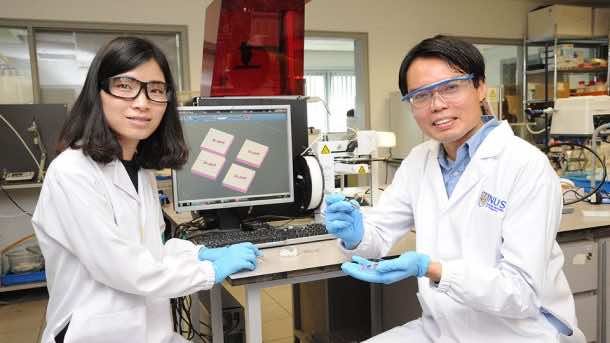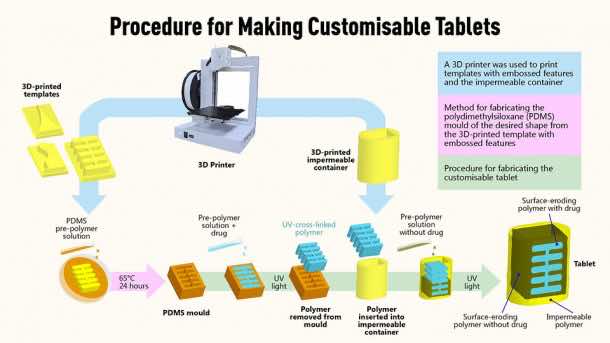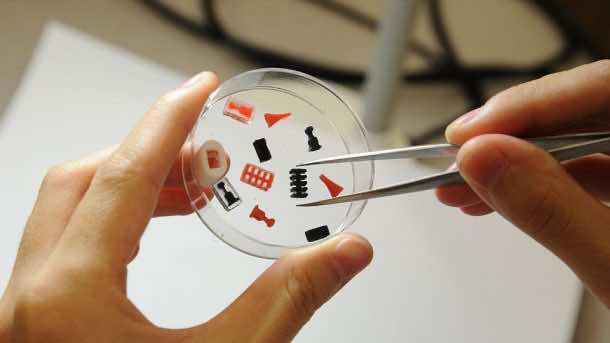It is hard enough to remember to take you medication on time. However, the people afflicted with diseases like arthritis, asthma, and peptic ulcers have to carefully monitor the dosage as well as the time of their medication. Similarly, the people who need hormonal medicines to be released timely, in synchronization with the biological processes in their bodies also have to vigilantly watch their treatment schedule.

The researchers from the National University of Singapore have devised a personalized 3D printed pill that will ease the suffering of the patients undergoing these treatments. The personalized medicines will control the dosage as well as the release rate if the medicine according to the prescription. The technique uses a 3D printer to create a single, time-release pill having a combination of different drugs in varying doses.
Previously, the time-release 3D-printed tablets were manufactured by extruding layer upon layer of drugs. However, those 3d-printed tablets released drugs continually and did not significantly control the dose of the medicine.
The 3D-printed medication system developed by the researchers at NUS is quite inexpensive and can be produced quickly.

Working of the 3D-Printed Tablet
A computer software is used to determine the type, dosage, and frequency of the medication. The software uses the input data to generate a computer model of a small multi-faceted template.
The same pattern is fed to a 3D printer which uses this pattern to create a mold of the template. The medicines are then poured into this mold, along with a non-toxic liquid polymer resulting in the formation of a positive cast of the template. The cast is encased in more polymer, but no further addition of drugs is made.

Once the pill has been swallowed, its outer layer gradually wears away, and the underlying drug-imbued polymer is brought to the surface. Various parts of the medicine template are revealed according to the pattern of the template. The five-pronged design featured in this image will release medication in five different timed stages.
The researcher duo behind this technology is already in talks with a multinational to commercialize this product.


